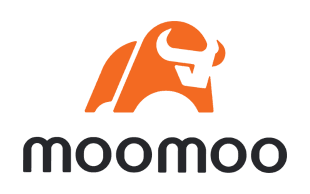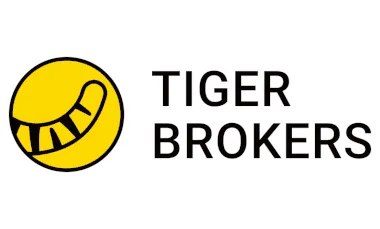Our top pick for
24/5 trading

The Walt Disney Company (DIS) is an entertainment company based in Burbank, California. Its products and services include cable networks such as Disney+, theme parks such as Disneyland and a studio producing films under the brands Pixar, Marvel and others. Disney became public on the New York Stock Exchange in 1981 and has seen enormous growth since.
Our top pick for
24/5 trading

Our top pick for
Copy trading

Our top pick for
Mobile app

Disney's shares were split on a 10000:9865 basis on 12 June 2007. So if you had owned 9865 shares the day before the split, the next day you would own 10000 shares. This wouldn't directly have changed the overall worth of your Disney shares – just the quantity. However, indirectly, the new 1.4% lower share price could have impacted the market appetite for Disney shares which in turn could have impacted Disney's share price.
| 52-week range | US$80.1 - US$118.59 |
|---|---|
| 50-day moving average | US$96.204 |
| 200-day moving average | US$100.0315 |
| Target price | US$121.337 |
| PE ratio | 29.9058 |
| Dividend yield | US$0.95 (1.09%) |
| Earnings per share (TTM) | US$3.08 |
Use the fields above to explore the returns from a historical investment. Please refer to the charts further up this page to see performance over 5 years, or other periods. Past performance doesn't indicate future results. Capital is at risk.
Historical closes compared with the last close of $110.49
| 1 week (2025-05-06) | 19.88% |
|---|---|
| 1 month (2025-04-10) | 29.64% |
| 3 months (2025-02-13) | 0.82% |
| 6 months (2024-11-13) | 7.56% |
| 1 year (2024-05-13) | 4.40% |
|---|---|
| 2 years (2023-05-11) | 19.69% |
| 3 years (2022-05-13) | 2.94% |
| 5 years (2020-05-13) | 7.36% |
We currently don't have that product, but here are others to consider:
How we picked theseThe technical analysis gauge below displays real-time ratings for the timeframes you select. However, this is not a recommendation. It represents a technical analysis based on the most popular technical indicators: Moving Averages, Oscillators and Pivots. Finder might not concur and takes no responsibility.
Valuing Disney stock is incredibly difficult, and any metric has to be viewed as part of a bigger picture of Disney's overall performance. However, analysts commonly use some key metrics to help gauge the value of a stock.
Disney's current share price divided by its per-share earnings (EPS) over a 12-month period gives a "trailing price/earnings ratio" of roughly 30x. In other words, Disney shares trade at around 30x recent earnings.
That's relatively high compared to, say, the trailing 12-month P/E ratio for the NASDAQ 100 at the end of 2019 (27.29). The high P/E ratio could mean that investors are optimistic about the outlook for the shares or simply that they're over-valued.
Disney's "price/earnings-to-growth ratio" can be calculated by dividing its P/E ratio by its growth – to give 0.9107. A low ratio can be interpreted as meaning the shares offer better value, while a higher ratio can be interpreted as meaning the shares offer worse value.
The PEG ratio provides a broader view than just the P/E ratio, as it gives more insight into Disney's future profitability. By accounting for growth, it could also help you if you're comparing the share prices of multiple high-growth companies.
Disney's EBITDA (earnings before interest, taxes, depreciation and amortisation) is US$18.4 billion (£14.6 billion).
The EBITDA is a measure of a Disney's overall financial performance and is widely used to measure stock profitability.
Over the last 12 months, Disney's shares have ranged in value from as little as US$80.1 up to US$118.59. A popular way to gauge a stock's volatility is its "beta".
Beta measures a share's volatility in relation to the market. The market (NYSE average) beta is 1, while Disney's is 1.493. This would suggest that Disney's shares are more volatile than the average for this exchange and represent, relatively speaking, a higher risk (but potentially also market-beating returns).
| Revenue TTM | US$92.5 billion |
|---|---|
| Operating margin TTM | 16.78% |
| Gross profit TTM | US$34 billion |
| Return on assets TTM | 4.25% |
| Return on equity TTM | 5.91% |
| Profit margin | 6.07% |
| Book value | 56.317 |
| Market capitalisation | US$166.5 billion |
| EBITDA | US$18.4 billion |
TTM: trailing 12 months
Dividend payout ratio: 22.14% of net profits
Recently Disney has paid out, on average, around 22.14% of net profits as dividends. That has enabled analysts to estimate a "forward annual dividend yield" of 1.09% of the current stock value. This means that over a year, based on recent payouts (which are sadly no guarantee of future payouts), Disney shareholders could enjoy a 1.09% return on their shares, in the form of dividend payments. In Disney's case, that would currently equate to about $0.95 per share.
While Disney's payout ratio might seem low, this can signify that Disney is investing more in its future growth.
Disney's most recent dividend payout was on 22 July 2025. The latest dividend was paid out to all shareholders who bought their shares by 23 June 2025 (the "ex-dividend date").
Environmental, social and governance (known as ESG) criteria are a set of three factors used to measure the sustainability and social impact of companies like Disney.
When it comes to ESG scores, lower is better, and lower scores are generally associated with lower risk for would-be investors.
Total ESG risk: 23.2
Socially conscious investors use ESG scores to screen how an investment aligns with their worldview, and Disney's overall score of 23.2 (as at 12/31/2018) is excellent – landing it in it in the 16th percentile of companies rated in the same sector.
ESG scores are increasingly used to estimate the level of risk a company like Disney is exposed to within the areas of "environmental" (carbon footprint, resource use etc.), "social" (health and safety, human rights etc.), and "governance" (anti-corruption, tax transparency etc.).
Environmental score: 6.53/100
Disney's environmental score of 6.53 puts it squarely in the 8th percentile of companies rated in the same sector. This could suggest that Disney is a leader in its sector terms of its environmental impact, and exposed to a lower level of risk.
Social score: 13.06/100
Disney's social score of 13.06 puts it squarely in the 8th percentile of companies rated in the same sector. This could suggest that Disney is a leader in its sector when it comes to taking good care of its workforce and the communities it impacts.
Governance score: 15.61/100
Disney's governance score puts it squarely in the 8th percentile of companies rated in the same sector. That could suggest that Disney is a leader in its sector when it comes to responsible management and strategy, and exposed to a lower level of risk.
Controversy score: 2/5
ESG scores also evaluate any incidences of controversy that a company has been involved in. Disney scored a 2 out of 5 for controversy – the second-highest score possible, reflecting that Disney has, for the most part, managed to keep its nose clean.
Walt Disney Company was last rated for ESG on: 2019-01-01.
| Total ESG score | 23.2 |
|---|---|
| Total ESG percentile | 15.68 |
| Environmental score | 6.53 |
| Environmental score percentile | 8 |
| Social score | 13.06 |
| Social score percentile | 8 |
| Governance score | 15.61 |
| Governance score percentile | 8 |
| Level of controversy | 2 |
The Walt Disney Company operates as an entertainment company worldwide. It operates through three segments: Entertainment, Sports, and Experiences. The company produces and distributes film and television content under the ABC Television Network, Disney, Freeform, FX, Fox, National Geographic, and Star brand television channels, as well as ABC television stations and A+E television networks; and produces original content under the Disney Branded Television, FX Productions, Lucasfilm, Marvel, National Geographic Studios, Pixar, Searchlight Pictures, Twentieth Century Studios, 20th Television, and Walt Disney Pictures banners. It also offers direct-to-consumer streaming services through Disney+, Disney+ Hotstar, and Hulu; sports-related video streaming content through ESPN, ESPN on ABC, ESPN+ DTC, and Star; sale/licensing of film and episodic content to television and video-on-demand services; theatrical, home entertainment, and music distribution services; DVD and Blu-ray discs, electronic home video licenses, and VOD rental services; staging and licensing of live entertainment events; and post-production services. In addition, the company operates theme parks and resorts comprising Walt Disney World Resort, Disneyland Resort, Disneyland Paris, Hong Kong Disneyland Resort, Shanghai Disney Resort, Disney Cruise Line, Disney Vacation Club, National Geographic Expeditions, and Adventures by Disney, as well as Aulani, a Disney resort and spa in Hawaii. Further, it licenses its intellectual property (IP) to a third party that owns and operates Tokyo Disney Resort; licenses trade names, characters, visual, literary, and other IP for use on merchandise, published materials, and games; operates a direct-to-home satellite distribution platform; sells branded merchandise through retail, online, and wholesale businesses; and develops and publishes books, comic books, and magazines. The Walt Disney Company was founded in 1923 and is based in Burbank, California.
If you have funds to invest for 2 or years or less, you can safely earn up to 5% p.a. through a high interest savings account, bonds or ETFs.
We used Finder's proprietary algorithm to find the 10 best stocks under $10 on the ASX.
We used Finder's proprietary algorithm to find Australian-listed companies that have strong fundamentals and have a share price under $5.
Best performers included Desoto Resources, Bowen Coking Coal and GWR Group.
Top gainers included Liontown Resources, Tabcorp Holdings and Resolute Mining.
Trade ASX stocks and ETFs with a $2 brokerage fee and a low minimum investment of just $10.
Following a couple of lean years for dividend investors, here are 10 ideas you could consider in your portfolio.
If you’re thinking of investing in gold, our guide will explain how and where to buy gold in Australia as well as the pros and cons of investing in it.
Find cheap stock brokerage in Australia when buying and selling shares on the ASX and other international exchanges.
Follow these tips to find the best share trading platform for you.